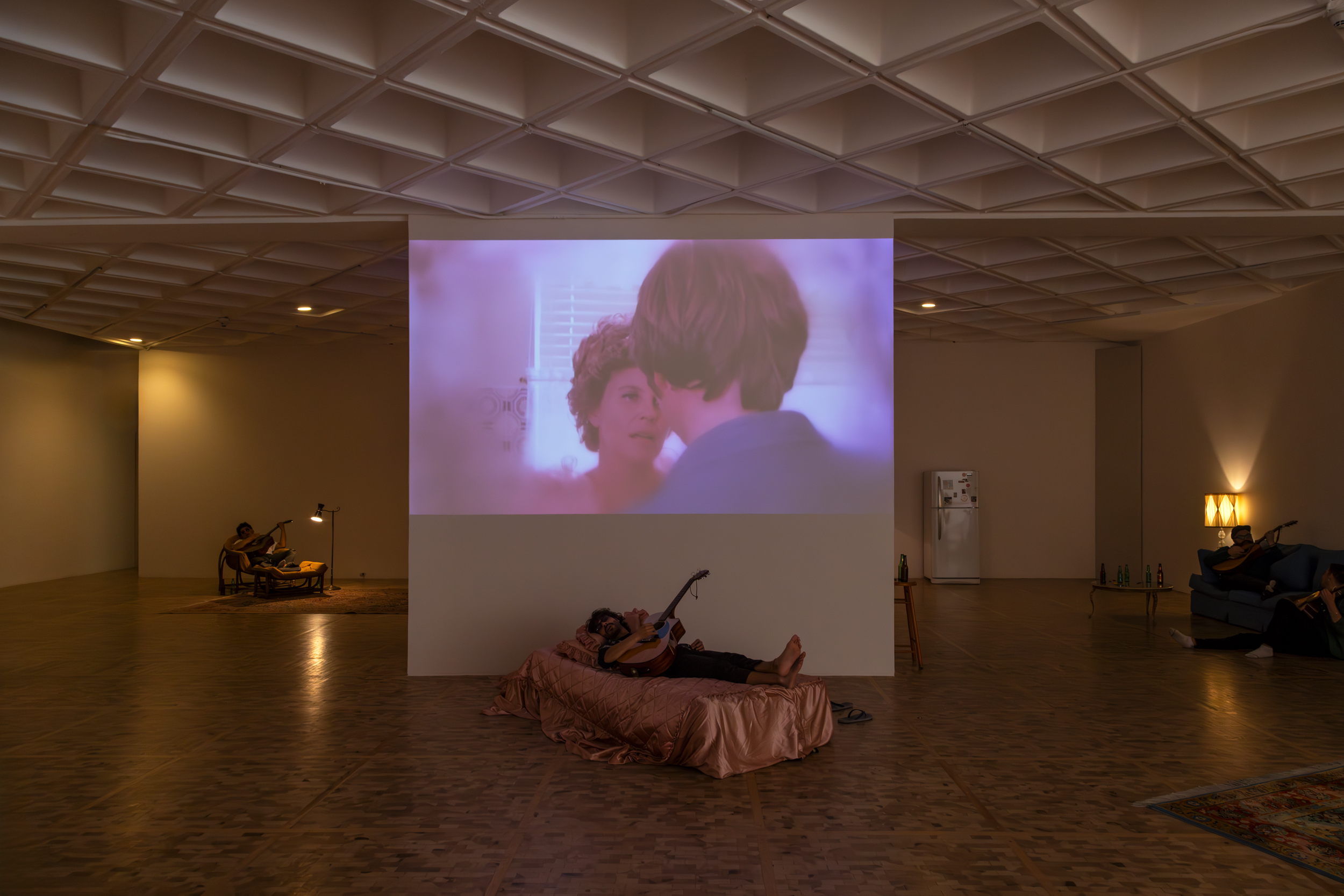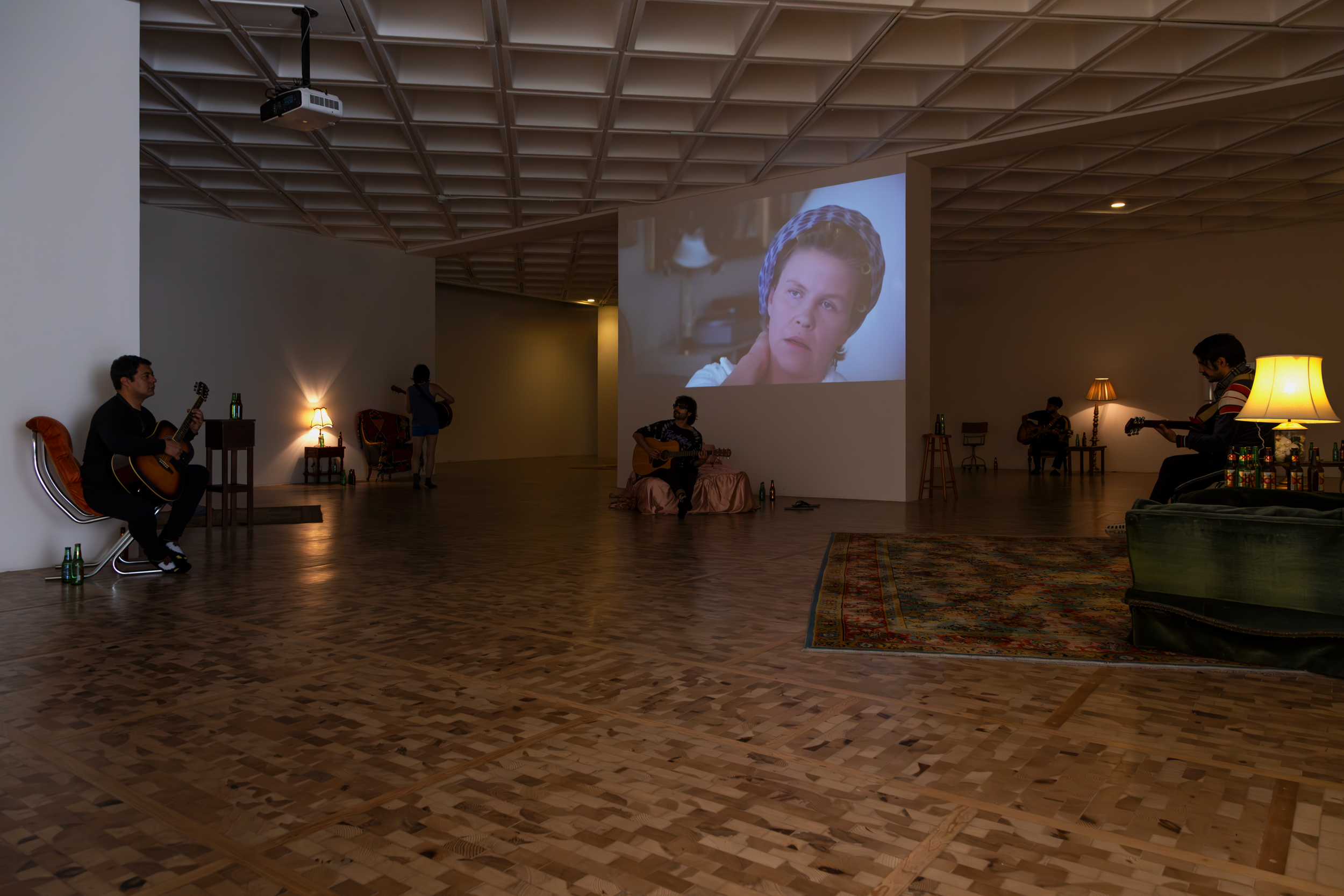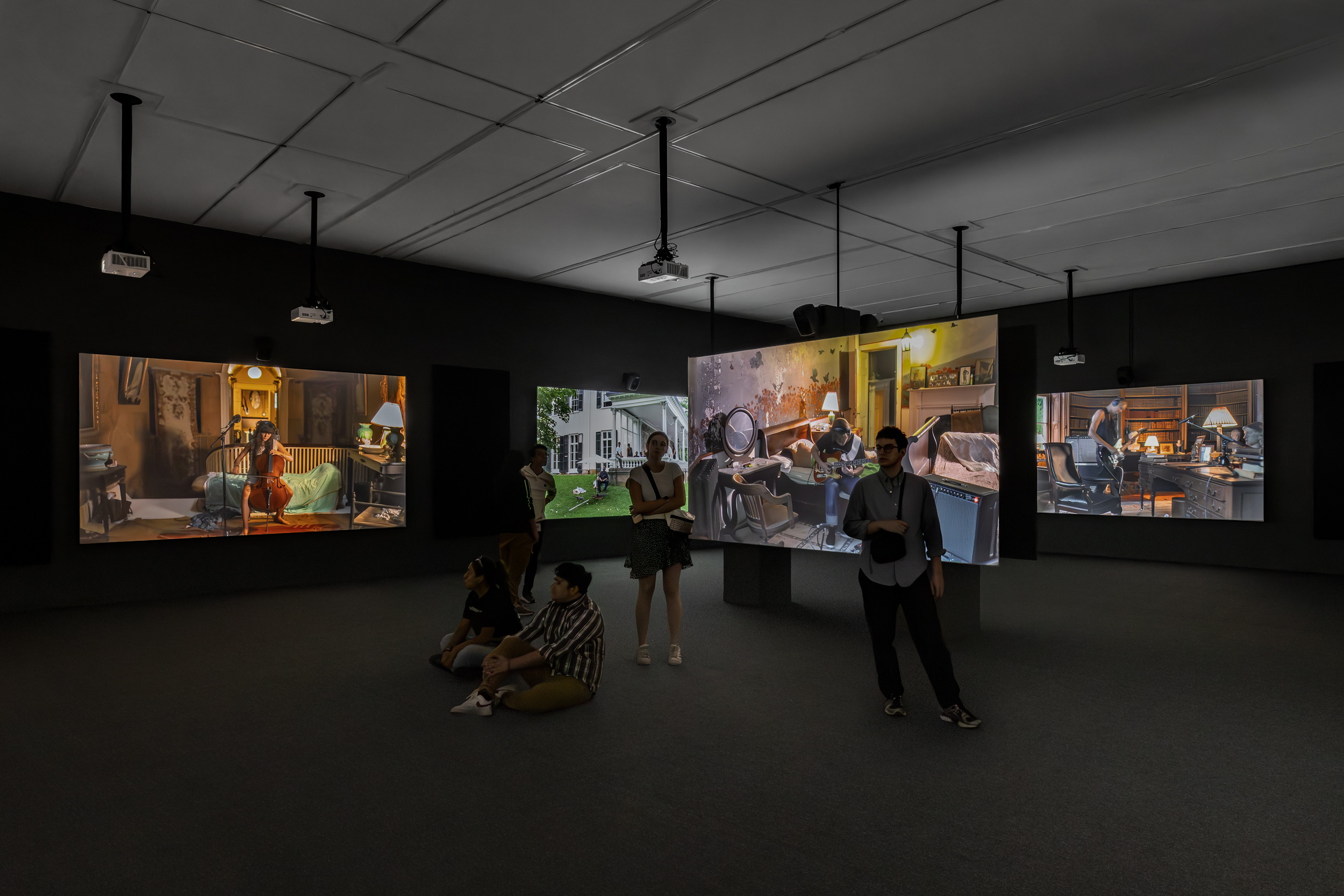
Review
Millennial Horror. Ragnar Kjartansson at Museo Tamayo
by Sandra Sánchez
Reading time
5 min
First repetition: What is the distance between art and life?
Each reply reveals the metaphysics on which both aspects are sustained.
I lean towards Boris Groys, a philosopher who, in his work Politics of Installation, argues that the artist holds sovereignty over his creation, legislating over his art. How do we, outside the realm of art, maintain our own sovereignty? How do we position ourselves in relation to law and politics when we do not create from the solitude of our studios but amidst sensations, perceptions, and diverse stances?
In Ragnar Kjartansson's work, life can sometimes get confused with art. Museo Tamayo showcases his solo exhibition The Things You See Before the Curtain Hits the Floor, curated by José Luis Blondet and Lena Solà Nogué.
The illusion is captivating. The exhibition space, open and bustling, features ten interconnected areas, each furnished with a luxurious armchair, carpet, beer bottles, cigarettes, and a notebook containing lyrics to a song performed in unison by ten musicians strumming guitars and singing a cappella, each seated or wandering nearby. In the center of the room, a screen displays a looping fragment in pastel hues from Reynir Oddsson's film Murder Story (1977), depicting a housewife's fantasies about a plumber.
The orchestrated performance is titled Take Me Here by the Dishwasher: Memorial for a Marriage (2011-2016). Upon entry, one might feel as if attending a stylish yet laid-back party. Xavier Dolan, Yorgos Lanthimos, Matias Piñeiro, Sofia Coppola... A millennial aesthetic where every element of the assembly is taken care of to suit the bohemian-chic atmosphere.

However, the scene becomes unsettling as the song, which repeats the dialogue between the actors (the artist's parents), drones on, seemingly frozen in time. The warm lighting, the seamless event coordination, and the aesthetic attention to detail start to clash with elements like the musicians' fatigued expressions and the police officers guarding the premises: they look tired.
Post-structuralist philosophy teaches us that every repetition carries, within its iteration, an element of difference. Repeated elements, seen over and over, eventually wear out, evoking apathy, exhaustion, or even terror.

Even as the musicians grab another beer, stand up, or sit back down, they remain bound to the stage. I interpret this limitation as the critical juncture of the performance, unveiling an event that, aesthetically, feels on the verge of exposing its artificiality. What is the specter that haunts the performance? The inability to escape the very performance itself, the need to craft an image and sustain it in a constant state. Through social media and various self-identifications, we strive to maintain the scene despite the monotony, the fatigue, and the diminishing sense of wonder that comes with repetition.

Amidst the passing of time during the live performance, where bodies tire, sweat, and challenge the audience's endurance, exists the realm of image-movement. The Visitors (2012) is a nine-channel video installation lasting slightly over an hour, featuring friends (musicians) of the artist converging in a 19th-century mansion within Rokeby Farm, New York. Each individual occupies a room in this picturesque house (also sporting a "Pinterest boho-chic" vibe) and performs a unique instrumental interpretation of lyrics based on a poem by Ásdís Sif Gunnarsdóttir:
A pink rose, in the glittery frost, a diamond heart, and the orange red fire
Once again I fall into my feminine ways
You protect the world from me, as if I’m the only one who’s cruel,
you have taken me, to the bitter end
Once again I fall into my feminine ways.
There are stars exploding and there is nothing you can do.
The brief song loops continuously. The audio fluctuates based on the visitors' movement within the space: proximity to the guitar player's video enhances their presence. During my visit, people chose to sit on the floor rather than stroll, appearing as if at a picnic, admiring the beautiful visuals and staging as one would a scenic vista. The soothing music elicited delight. Unlike Take Me Here by the Dishwasher…, in The Visitors there is a resolution: all performers exit their rooms to convene in a shared space, departing from the house to vanish into the lush greenery of a pastoral horizon. Utopian echoes, so contemporary.
The juxtaposition between these two pieces hints at the notion that the bohemian illusion may only be sustained as an image-movement, subject to a moment of post-production where fatigue is absent, where a happily-ever-after is plausible, and where repetition leads to ongoing harmony: uninterrupted.
Though it can make sense (and is not without its class distinctions), the idea that the self's ideal hinges on convivial outings with friends generating nearly utopian moments of shared imagination, the insistence on upholding this ideal incessantly, under all circumstances, in everyday life is undeniably terrifying. Thus, the disparity between the emotions evoked by the live performance (where beauty mingles with disquiet) and those provoked by the video installation (where a resolution, a departure, an ending is conceivable).

Throughout the exhibition, we encounter other pieces where repetition manifests not as a rhetorical device, but as a tactic of erosion wherein the once clearly defined gradually loses significance, ultimately unveiling that what is inescapable in art, as in life, is the act of assemblage.
The exhibition will remain open for visitors until March 3 at Museo Tamayo.
Translated to English by Luis Sokol
Published on February 24 2024